Introduction
Autistic burnout is a state of physical and mental exhaustion that can significantly impact individuals on the autism spectrum. It stems from the constant effort to adapt to a world designed for neurotypical individuals, leading to a drained battery effect. The resulting exhaustion is more than just feeling tired; it can lead to serious consequences such as a decline in personal hygiene, eating habits, and sleep quality, all of which are essential for well-being.
Autistic burnout manifests as increased anxiety, emotional instability, and a decrease in cognitive functions. Supporting those experiencing autistic burnout requires an understanding of their unique stressors and the implementation of strategies to reduce demand. Recent figures suggest that autistic individuals face significant challenges in the workplace, underscoring the importance of creating supportive environments that accommodate neurodiversity.
Recognizing and addressing autistic burnout is crucial, as it highlights the broader issue of workplace stress affecting a diverse range of employees. By addressing the needs of neurodivergent individuals, employers can create a more inclusive and supportive environment that benefits everyone.
Definition and Characteristics of Autistic Burnout
Autistic burnout is a state of physical and mental exhaustion that can significantly impact individuals on the autism spectrum. It often stems from the constant effort to adapt to a world designed for neurotypical individuals, leading to a drained battery effect. The resulting exhaustion is more than just feeling tired; it can lead to serious consequences such as a decline in personal hygiene, eating habits, and sleep quality, all of which are essential for well-being.
The impact of autistic burnout is profound and varied, manifesting as increased anxiety, emotional instability, and a decrease in cognitive functions. As social and sensory information becomes too intense to manage, self-care often takes a backseat, exacerbating the issue. Unfortunately, this can lead to a vicious cycle where the lack of basic self-care further diminishes the ability to cope with stress.
Supporting those experiencing autistic burnout requires an understanding of the individual's unique stressors and the implementation of strategies to reduce demand. Whether the stress originates from work, social interactions, or other environmental factors, identifying and addressing these triggers is a crucial step towards recovery.
Recent figures suggest that autistic individuals face significant challenges in the workplace, with only three in ten in employment, compared to eight in ten non-disabled people. These statistics underscore the importance of creating supportive environments that accommodate neurodiversity and promote the well-being of all employees.
The importance of recognizing autistic burnout cannot be understated, as it highlights the broader issue of workplace stress affecting a diverse range of employees. By addressing the needs of neurodivergent individuals, employers can create a more inclusive and supportive environment that benefits everyone.
Causes of Autistic Burnout
Adults on the autism spectrum often face unique challenges that can lead to a state commonly referred to as autistic burnout. This condition is characterized by intense physical and mental exhaustion, reduced performance, and an overwhelming sense of depletion. Sensory overload is a significant factor that contributes to autistic burnout. Individuals with autism may have heightened sensitivities to sights, sounds, tastes, smells, and touch, which can quickly become overstimulating. This sensory processing difficulty means that everyday environments can seem loud, chaotic, and intensely stressful, leading to a strong desire to find a quiet, calming space to recover.
Social interactions and communication also pose considerable challenges for autistic adults. Efforts to 'mask' or camouflage their autistic traits in order to fit into neurotypical expectations can be exhausting. The constant adaptation to a society that often misunderstands or excludes neurodivergent individuals adds to the stress, increasing the risk of burnout.
Additionally, the pressures of professional and personal life can compound these challenges. For instance, healthcare workers, who often operate in high-stress environments, have experienced a significant increase in burnout, affecting their mental and physical well-being. This is not dissimilar to the experiences of autistic individuals navigating daily life.
Statistics show that autistic individuals are more likely to experience co-occurring physical and mental health conditions, which can exacerbate the effects of burnout. Furthermore, the environment we live in, which can be intense and overstimulating, often leaves those with sensory sensitivities feeling overwhelmed on a regular basis, contributing to the chronic nature of autistic burnout.
To support autistic adults, it's essential to recognize the signs of burnout early and provide appropriate interventions. By focusing on areas such as protection from harm, fostering connections and community, and prioritizing mental health as a workplace issue, we can help mitigate the risk of burnout and support the well-being of neurodivergent individuals.
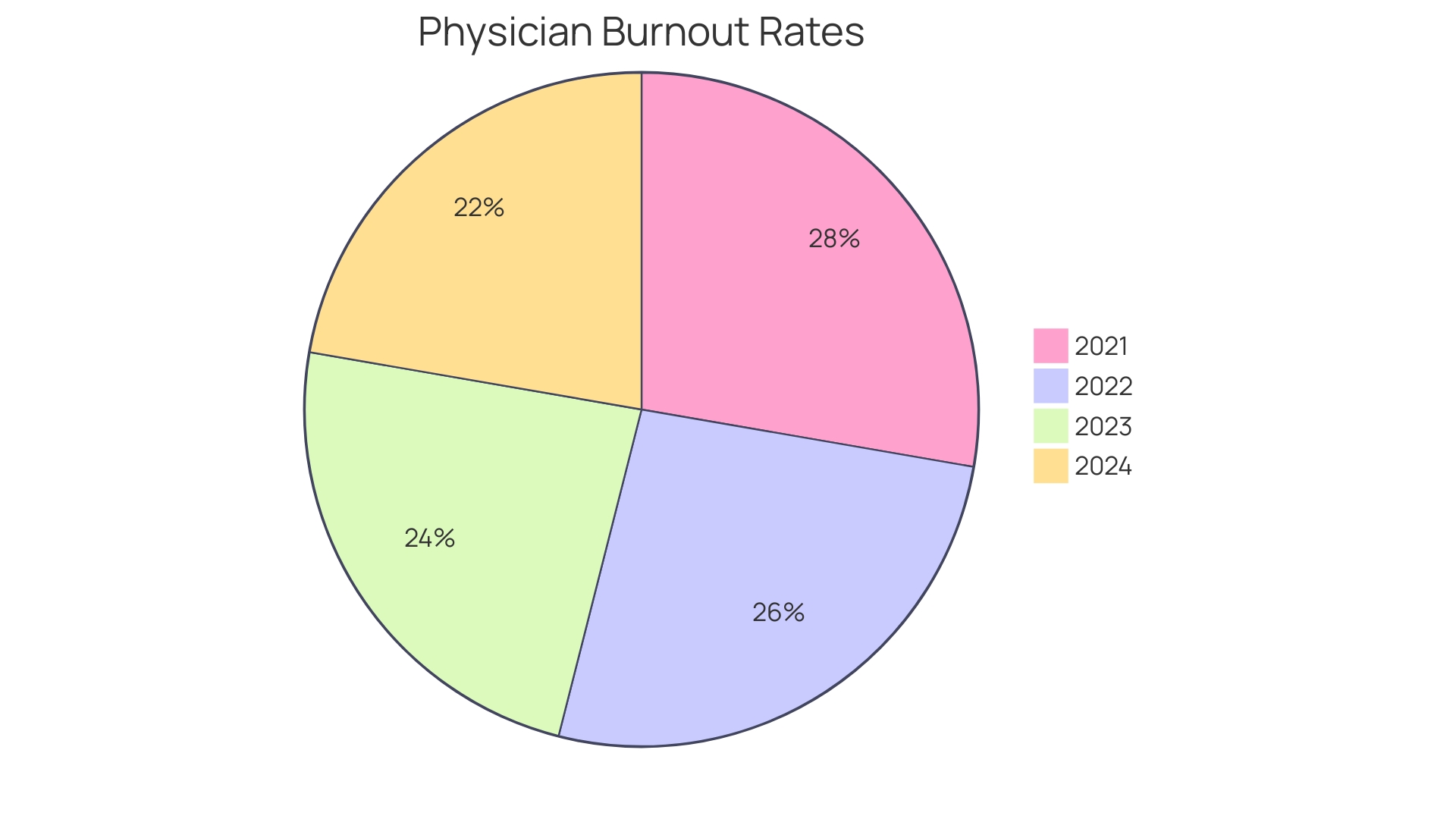
Signs and Symptoms of Autistic Burnout
Early identification of autistic burnout is crucial for providing timely support. Some common signs to watch out for include a noticeable increase in exhaustion, troubles with concentration, increased sensitivity to sensory input, a tendency to withdraw from socializing, and a general dip in well-being. Recognizing these symptoms allows both the individual and their support network to initiate appropriate measures to manage the burnout and offer the help needed.
Physical self-care often takes a hit during burnout, leading to neglected personal hygiene and essential needs like proper nutrition and sleep, further exacerbating the issue. It's vital to understand that autistic individuals frequently exert considerable effort to conform to neurotypical norms, which can be incredibly taxing. This constant adjustment can lead to overwhelming stress as their unique processing style, which often involves intense pattern recognition and challenges with filtering out irrelevant information, can lead to sensory and social overload. However, with understanding and support, autistic individuals can not only cope but also thrive.
Reducing demands is another key aspect of burnout recovery. Stressors are subjective; some might find work stimulating yet find social events draining, while others may experience workplace environments as the primary source of their burnout. It's necessary to identify which activities are the most depleting and to seek rest from them wherever possible.
It's also important to note that burnout is not solely an individual issue but an institutional one. Employers should recognize the value of neurodiversity, understanding that autistic employees can be the 'canaries in the coal mine,' signaling broader workplace issues. Proactively preventing burnout is essential, and when symptoms do arise, they can manifest as emotional exhaustion, cynicism, and a sense of reduced personal effectiveness. These symptoms can lead to physical consequences like disrupted sleep and hormonal imbalances, highlighting the interconnectedness of mind and body.
Moreover, the World Health Organization characterizes burnout by three distinct features: overwhelming exhaustion, mental detachment from one's job, and a sense of ineffectiveness. While traditionally associated with occupational stress, current discussions suggest that our understanding of burnout may evolve post-pandemic, as the lines between work and personal life continue to blur.
In summary, acknowledging the signs of autistic burnout and implementing strategies for physical self-care and demand reduction can significantly aid recovery. Recognizing the institutional aspects of burnout can also guide employers to create more accommodating and supportive work environments for all employees.
Impact on Daily Life and Mental Health
Autistic burnout can profoundly affect an individual's daily life, impairing their ability to manage routine tasks, sustain employment, and engage with others socially. This condition, recognized by the World Health Organization as a legitimate syndrome caused by chronic workplace stress that has not been managed, is characterized by physical and emotional exhaustion. The chronic stress from trying to adapt to a world not designed for neurodivergent individuals can exacerbate mental health issues, including anxiety and depression.
Research has shown that many autistic adults face significant barriers in career progression and employment support. A review of 33 studies revealed that autistic individuals often aspire to advance in their careers but encounter challenges, such as reduced opportunities upon disclosing their diagnosis to employers and gaps in employment history. This underemployment, where autistic individuals work in positions below their skill level, underscores the need for more effective support systems, such as mentorship programs, to assist them in realizing their career potential.
Furthermore, the stress of constant adaptation to a predominantly neurotypical society can be overwhelming, especially when considering that autistic individuals often process information in a bottom-up manner. This can make sensory and social stimuli particularly taxing, leading to burnout. It is imperative to acknowledge that burnout among neurodivergent individuals could be a sign of larger, systemic issues within a workplace environment.
It is also important to recognize that the research on autism in adulthood is limited, especially regarding life outcomes for middle-aged and older adults. According to Dr. Gregory Wallace, an associate professor at The George Washington University, most knowledge is concentrated on the transition into young adulthood, with minimal information available on later stages of life.
However, studies have demonstrated that with proper support and accommodations, autistic individuals can thrive. Understanding the unique strengths and needs of autistic adults is essential, particularly for healthcare providers who can include these patients in their caseloads with minimal additional training. By fostering a supportive environment and acknowledging the importance of neurodiversity, we can help mitigate the impact of burnout and enhance the overall well-being of autistic individuals.
Strategies for Recovery from Autistic Burnout
To effectively navigate the road to recovery from autistic burnout, it's essential to adopt a multidimensional approach that cares for both the body and mind. Engaging with therapists or counselors who specialize in autism can provide tailored support that respects the unique experiences of those on the spectrum. Emphasizing self-care is crucial; activities that promote mindfulness and relaxation are not luxuries but necessities that help restore balance. Likewise, crafting a daily schedule with built-in periods for rest can prevent overwhelming fatigue. In addition, creating sensory-friendly spaces is vital, as they can significantly reduce stress and aid in recuperation, allowing for a smoother journey back to vitality and well-being.
Acceptance and Social Support
Navigating autistic burnout requires a compassionate understanding from those around the individual. This condition, often a response to prolonged stress or overstimulation, can significantly impact one's well-being. The journey toward recovery is not solitary; it is deeply influenced by the acceptance and social support from family, friends, and the broader community. An inclusive environment, where individuals with autism can express their needs without judgment, plays a pivotal role in their ability to recover and thrive.
Research underscores the complexity of autistic identity, which encompasses both personal and social dimensions that affect life choices, such as career paths aligned with autistic strengths. Studies suggest that during adolescence and early adulthood, when identity development is especially crucial, the support of a community can be integral to forming a stable and continuous sense of self. It's during these formative years that individuals grapple with their aspirations and societal roles, making the support from their environment all the more critical.
Healthcare professionals' understanding of autism is also paramount. Limited knowledge can lead to harmful misdiagnoses and inadequate care, exacerbating the challenges autistic individuals face. It's been observed that autistic adults experience higher levels of health difficulties and lower satisfaction with health services compared to non-autistic adults, highlighting the need for tailored training and adaptations in healthcare settings.
The concept of neurodiversity affirms that neurological differences, like autism, should be recognized and respected as a natural variation in the human brain. Embracing this perspective encourages the creation of supportive environments that do not seek to 'cure' but rather accommodate and assist. Recognizing the importance of person-centered care, we see autism not as a deficit but as a distinct aspect of the human experience that enriches our diverse world.
Leaning into Autistic Strengths
In the journey of self-discovery and professional growth, recognizing and harnessing personal strengths is paramount, especially for autistic individuals. These individuals are often equipped with exceptional abilities that include an extraordinary focus on details, inventive creativity, and remarkable problem-solving skills. By embracing and capitalizing on these talents, they can significantly improve their self-confidence, creating a profound sense of achievement and belonging.
A recent study highlights the importance of involving autistic people and their communities in shaping the future of autism research. The consensus is clear: research has the potential to significantly influence the quality of life for autistic individuals. However, substantial shifts are necessary to align research with the actual needs and priorities of the autistic community.
Emphasizing autistic identity, personal and social, is essential. During pivotal life stages such as adolescence and early adulthood, the development of a stable identity is crucial. It allows for a continuous sense of self and differentiates one from others socially. When autistic traits are integrated into personal identity, they become a defining element of one's being, guiding significant life decisions, including educational and career paths. This alignment with one's innate strengths can lead to more fulfilling career choices for autistic individuals.
Moreover, burnout, a pervasive issue in today's workforce, is not merely an individual's challenge but an organizational one. Neurodivergent employees, like canaries in a coal mine, may signal systemic issues within a workplace that could soon affect others. Therefore, preventing burnout is vital, not just for the well-being of autistic employees but for the entire workforce.
The Surgeon General's Framework for Mental Health and Well-Being has identified protection from harm and fostering connection and community as key areas. Such an environment, where individuals feel valued and included, can combat workplace burnout and support mental health. This aligns with research findings that social connections are a primary factor in sustainable mental health and physical health.
In summary, leveraging the inherent strengths of autistic individuals not only fosters personal growth and a sense of identity but also serves as a protective factor against workplace burnout. It's crucial for organizations to recognize the value of a neurodiverse workforce and create supportive environments that nurture the well-being of all employees.
Formal Supports and Accommodations
Navigating life with autism spectrum disorder can be particularly challenging when facing the pressures of adulthood, especially when it comes to employment. While therapeutic needs for conditions like anxiety and depression may not differ significantly from the general population, the experiences of autistic adults can be distinct, often involving societal misunderstandings and rejection. A staggering 1 in 70 people in the UK is estimated to be autistic, and despite a strong desire to work, only 3 in 10 autistic individuals of working age are employed. This is notably less than the average for all disabled and non-disabled people. Autistic individuals also face the most significant pay discrepancies, earning a third less than their non-disabled counterparts.
The summer of 2023 brought to light the urgency of addressing these issues, as views from various stakeholders were gathered to explore how to better integrate autistic individuals into the workforce. The focus was on raising awareness, reducing stigma, and tapping into the unique strengths of autistic employees. Research highlights the need for effective support to facilitate career progression for autistic people, who often encounter barriers such as underemployment and gaps in their work history.
Physical self-care is another area that often declines during autistic burnout. Missing basic needs like adequate sleep, nutrition, and hygiene can exacerbate the situation, making recovery all the more difficult. This underscores the need for accessible formal supports and accommodations that can alleviate stressors and aid in managing the environment. Autistic adults frequently report being denied service by practitioners ill-equipped to meet their specific needs. With some additional training, healthcare providers can better support the autistic community.
In the face of such challenges, it is paramount that employers recognize the value of neurodiversity and the contributions of autistic employees. As highlighted by the World Health Organization, burnout is a syndrome resulting from chronic workplace stress that has not been adequately managed. It serves as a reminder that the well-being of neurodivergent individuals can be indicative of the overall health of the workplace environment. Employers are encouraged to take proactive steps in preventing burnout and creating a supportive workplace for all employees.
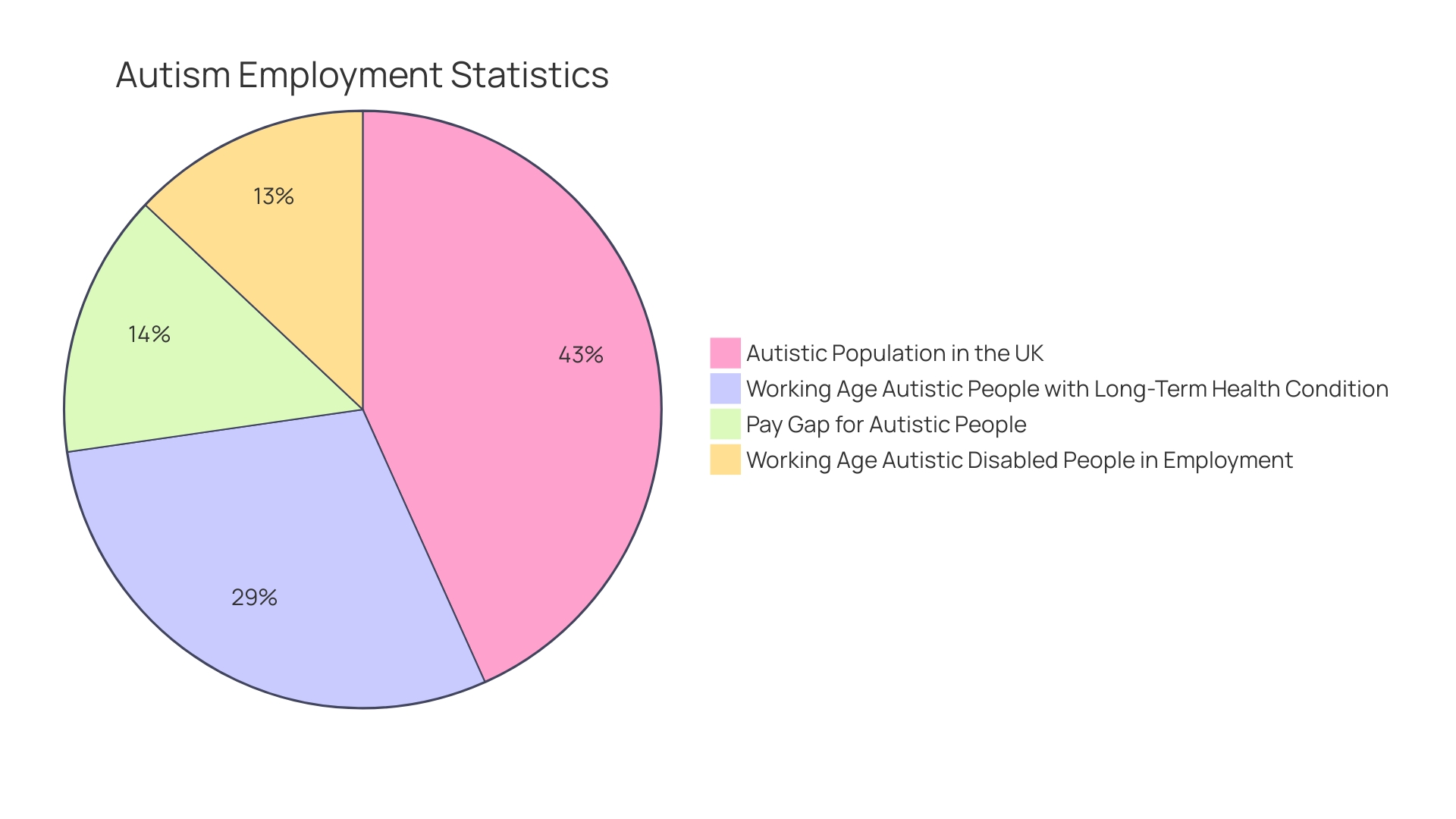
Reducing Load and Setting Boundaries
Understanding the multi-dimensional nature of burnout is imperative for both individuals and organizations seeking to prevent its onset. Burnout often manifests in a triad of symptoms: emotional exhaustion, a sense of detachment or cynicism, and feelings of reduced personal accomplishment. These symptoms can result in physical signs such as fatigue, fragmented sleep, and hormonal imbalances, notably elevated cortisol levels. Notably, burnout isn't just about being overworked; it's a complex interplay of work environment, personal factors, and lifestyle.
For those feeling the pressure of burnout, it's critical to take proactive steps, not just to manage workloads, but to nurture personal well-being. This means setting clear boundaries to preserve time for rest and recuperation, learning to say no to overwhelming demands, and advocating for your needs in the workplace. This can help combat the feelings of inefficacy and disengagement that are hallmarks of burnout.
Moreover, findings from recent studies highlight the importance of individual traits such as optimism, resilience, and a sense of purpose. These personal characteristics can serve as buffers against burnout, suggesting that fostering these qualities can be as important as managing external stressors. For those in demanding fields such as healthcare, where burnout has been magnified during the pandemic, building a supportive community and engaging in meaningful social support are vital.
Lastly, organizations play a crucial role by promoting a healthy work-life balance and recognizing the symptoms of burnout. Encouraging breaks during the workday, respecting employees' time outside of work hours, and limiting excessive meeting schedules are practical strategies that can help. After all, employees who feel able to disconnect after work report significantly higher productivity and well-being.
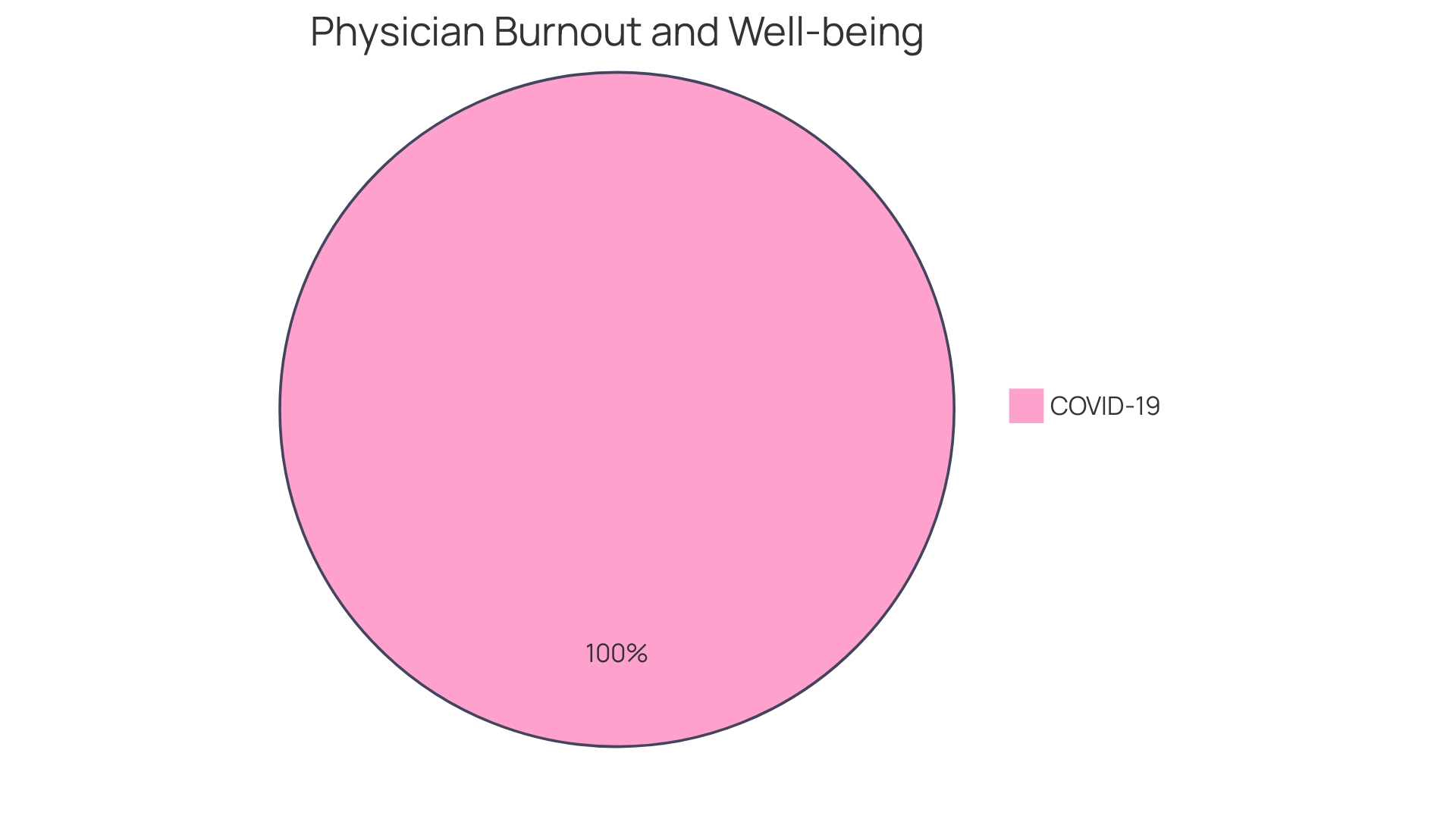
Self-Advocacy and Health
Understanding the multifaceted nature of burnout is crucial in addressing its prevalence in today's fast-paced world. Burnout typically emerges through a triad of symptoms: emotional exhaustion, a sense of depersonalization towards one's work, and doubts about personal achievements. To counteract these symptoms, it's essential to engage in self-care practices that nurture both mental and physical health.
The first step in combating burnout involves self-advocacy, which means effectively communicating one's needs within the healthcare decision-making process. By confidently expressing preferences and boundaries, individuals can ensure that their well-being is prioritized. It's not simply about achieving a desired outcome; effective self-advocacy is about engaging in a dialogue where one's voice is heard and respected.
To support self-advocacy, it's important to be informed. When seeking health resources, especially online, it's imperative to assess their credibility. Trustworthy sites often end in .gov, .edu, or .org, and provide up-to-date information. A discerning approach to consuming health information can empower individuals to make more informed decisions regarding their care.
Pairing self-advocacy with a healthy lifestyle is another key strategy. Regular exercise, balanced nutrition, and ample rest are pillars of a robust health regimen. Research has shown that physical activity can mitigate symptoms of burnout, promoting better mental health and resilience.
Furthermore, the healthcare system is evolving to embrace models that emphasize person-centered care, which aligns with the principles of self-advocacy. By promoting a shift from traditional, paternalistic models to those that encourage patient engagement and shared decision-making, the healthcare landscape is becoming more conducive to individual well-being.
In light of these insights, it's clear that prioritizing health and self-advocacy are not only essential for recovering from burnout but also for preventing it. By fostering effective communication skills and maintaining a healthy lifestyle, individuals can build resilience and thrive in the face of demanding work environments.

Self-Knowledge and Preventative Measures
To effectively manage and mitigate burnout, it's crucial to develop a deep understanding of one's personal triggers and limits, alongside adopting preventive strategies. Groundbreaking research by Christina Maslach, a pioneer in the field of burnout, has revealed that burnout is characterized by a triad of symptoms: exhaustion, cynicism, and a sense of inefficacy. Engaging in regular self-reflection and self-care practices is essential for maintaining mental, emotional, and physical health, which are deeply interconnected. By recognizing early signs of distress and implementing techniques such as stress management, individuals can actively participate in their health journey and prevent burnout from undermining their well-being and productivity. In the complex world of academia, where pressures often extend beyond the workplace, understanding the multifaceted nature of burnout is particularly relevant. It's not just about being overworked; it's about navigating an array of personal and professional factors that contribute to one's overall stress load. With approximately 13% of Norwegian employees at high risk of burnout, as identified in recent studies, the need for proactive self-care has never been more pressing. Whether through reading, learning new skills, or simply taking time for oneself, these acts of self-care can significantly impact one's ability to manage stress and foster resilience.
Creating Sensory-Friendly Environments
To aid in the recovery from autistic burnout, it is essential to tailor environments to be sensory-friendly. This includes attention to acoustics, a key component identified in the Autism ASPECTSS Design Index, to minimize noise that can overwhelm those with sensory sensitivities. Furthermore, considering spatial sequencing, or how individuals move through and experience a space, can lead to more calming environments. Introducing sensory accommodations like noise-canceling headphones and weighted blankets can provide additional layers of comfort. Innovations like AR applications converting tactile sensations into visual and auditory feedback show promise in customizing patient experiences, highlighting the importance of addressing each individual's unique sensory profile. Such environments not only respect the neurodiversity of individuals but are a step toward preventing burnout, a condition that can signal broader institutional stress. By proactively crafting these spaces, we contribute to the overall well-being of individuals on the autism spectrum.
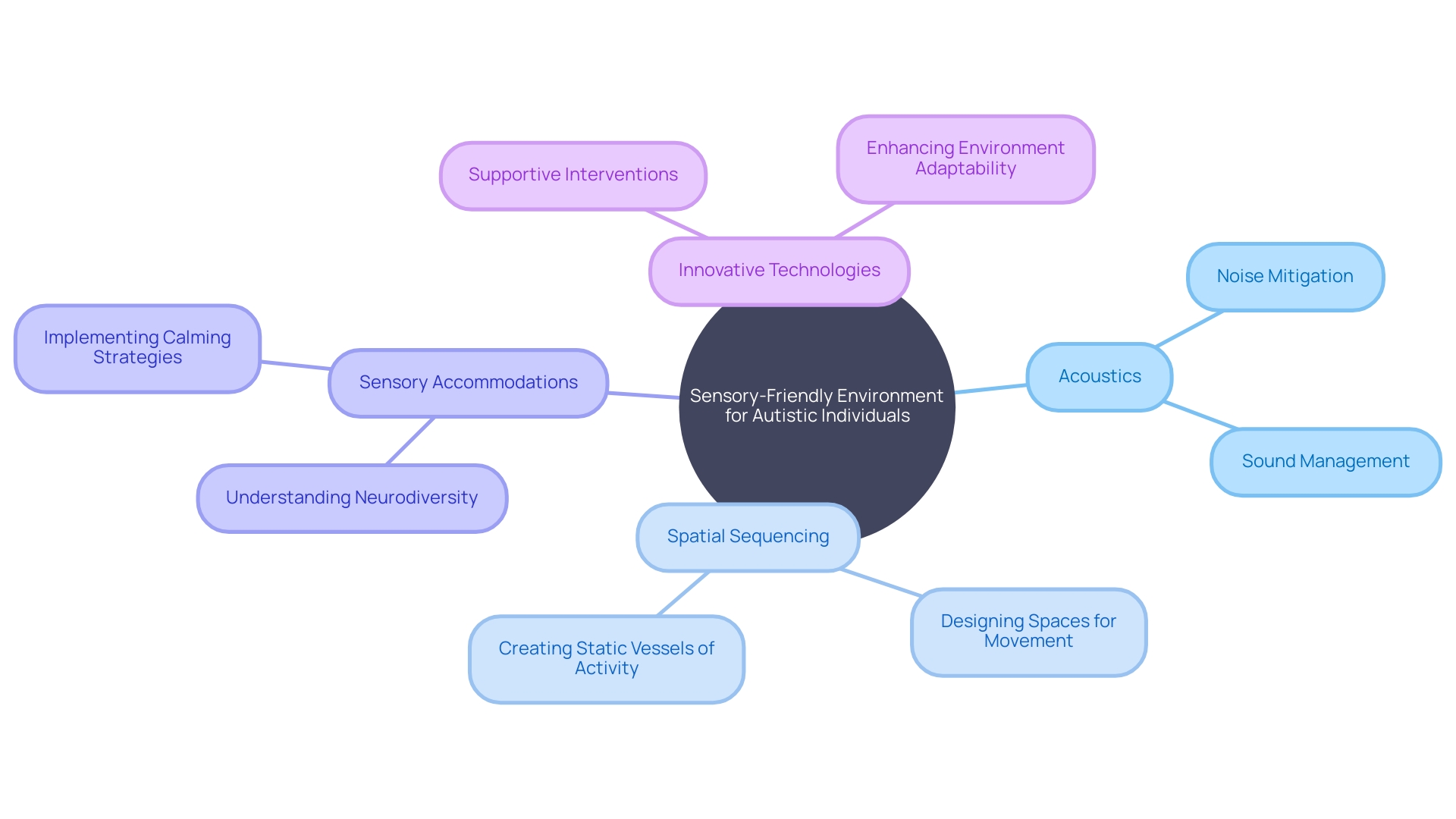
Managing Social Engagements
Navigating social scenarios can be particularly taxing for those recovering from autistic burnout. It's crucial to find a balance in social activities that respects personal energy and sensory preferences. This might entail delineating clear social boundaries, effectively conveying one's needs, and emphasizing self-care before and after social events. For instance, individuals like Lil, a 17-year-old transitioning to a new educational phase, face heightened challenges due to the uncertainty of new environments and the need for familiar routines. Dr. David (Dan) R. Offord highlighted the importance of engaging and supporting children, including those with autism, in all life domains to ensure mental health and equity. In line with this, managing social commitments becomes an act of self-preservation and fairness, allowing for participation at a comfortable pace. Current understanding of autism spectrum disorder (ASD) underscores its diverse impact on behavior and social skills, necessitating tailored support for meaningful inclusion in community life. Therefore, establishing a supportive environment for social engagement is not just beneficial but essential for maintaining the well-being of individuals with autism, as they navigate their unique paths through life's social race.
Exploring Self-Care Practices
Embracing self-care is a science-backed strategy crucial for those on the journey to recovery from burnout. It's not just about taking a break; it's about engaging in activities that replenish your mental, emotional, and physical health. Whether it's immersing yourself in the quiet embrace of nature, delving into the pages of an enthralling book, or expanding your knowledge with a TED talk, these actions are more than just pastimes—they're part of fostering resilience and joy.
The profound effects of self-care are rooted in how it can recalibrate our exhaustion levels, reignite our passion for work, and bolster our sense of personal efficacy. Burnout manifests in a trifecta of symptoms: emotional exhaustion, detachment, and a negative self-perception, all of which can be alleviated by self-care practices. Mindfulness, specifically, has emerged as a potent tool. Defined as a focused presence in the moment, its simplicity belies its power. With resources available from books to apps, mindfulness offers a convenient, self-guided approach to restoring balance, even for those with limited time or funds.
The responsibility of self-care doesn't rest solely on the individual; employers play a pivotal role. In fact, the majority of our waking hours are spent at work, providing a prime opportunity for organizations to make a positive impact on employee well-being. By adopting a holistic view of health, workplaces can contribute significantly to reducing burnout. This means valuing not just the absence of illness, but the complete picture of an individual's health, including their mental and spiritual wellness.
In the end, the path to recovery from burnout is multifaceted, involving both personal commitment to self-care and organizational support. It's about harnessing the power of practices that foster emotional intelligence, resilience, and a supportive environment to combat the weariness of burnout and spark a renewed sense of purpose and well-being.
Cultivating a Supportive Network
The road to recovery from burnout is often a communal journey, as isolation can exacerbate the feelings of exhaustion and inefficacy. It's crucial for those navigating this path to foster connections with others who can relate to their experiences. Such solidarity is found in various forms, from support groups to online forums where individuals can exchange stories and strategies that nurture a sense of community and understanding.
The prevalence of burnout, characterized by emotional exhaustion, cynicism, and a diminished sense of personal accomplishment, signals a widespread challenge that extends beyond individual circumstances. A global survey of 2,065 people across 40 countries revealed that while burnout stems from chronic workplace stress, it is preventable through organizational support and stress management practices.
Healthcare professionals have reported alarming rates of burnout, with the COVID-19 pandemic intensifying the situation. A comprehensive review of 71 studies across 26 countries highlighted the urgent need for a supportive environment that fosters personal growth, meaningful social connections, and work-life integration. In this context, emotional intelligence emerges as an essential skill that can disrupt the burnout cycle and promote a healthier work atmosphere.
Leaders in healthcare and academia acknowledge the complexity of burnout, urging a shift toward systemic solutions that address the underlying causes. These include fostering psychological safety, which serves as a buffer against burnout by replenishing one's social resources. Interventions such as positive leadership training have shown promise in enhancing engagement and reducing the intent to leave among healthcare professionals.
Ultimately, building a network of support is not just about finding camaraderie; it's about creating a sustainable environment where individuals can thrive despite the pressures of their roles. This collective approach not only aids in recovery but also empowers individuals to advocate for changes that can prevent burnout from taking root in the first place.
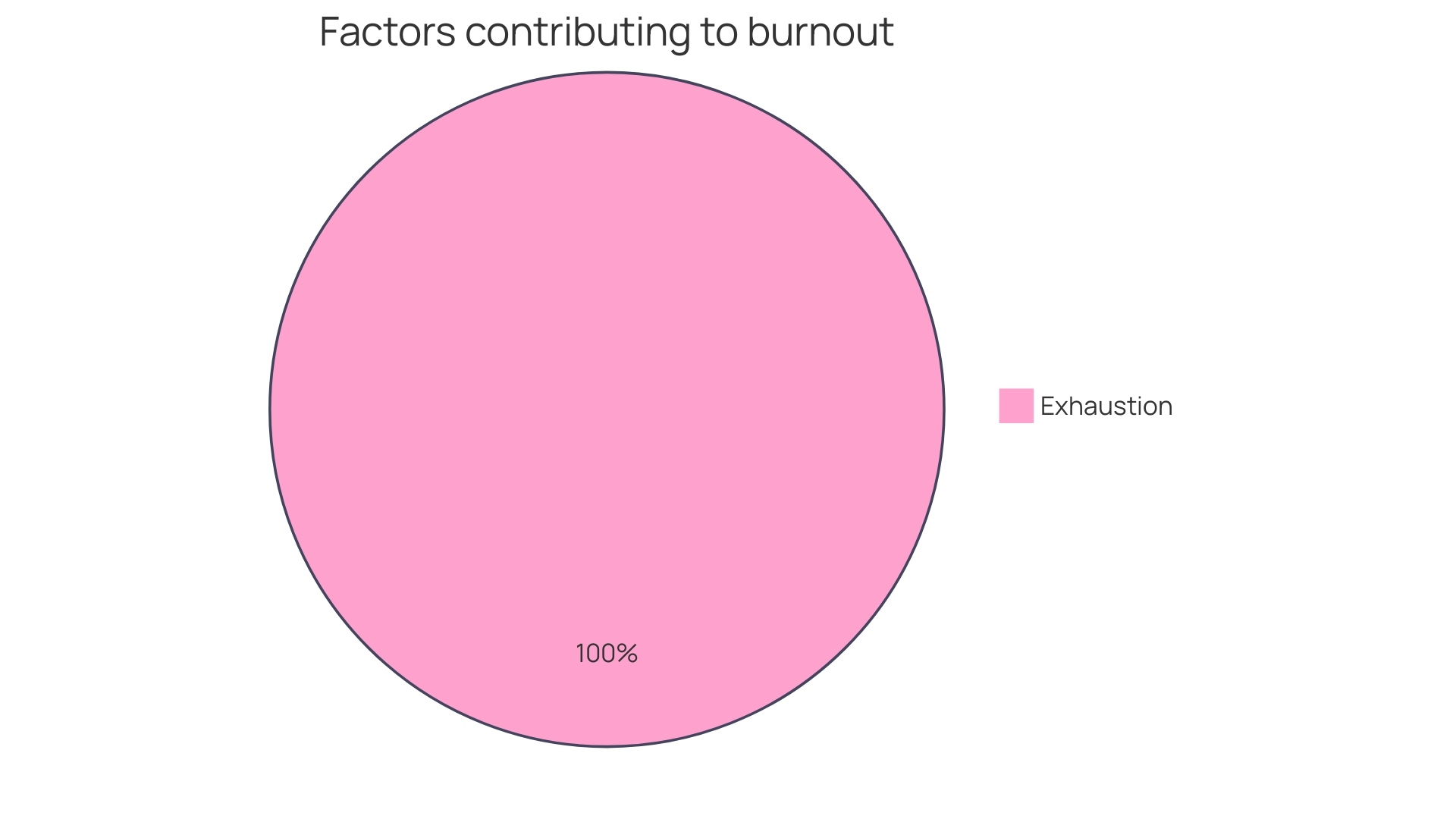
Preventing Future Burnout
To effectively prevent burnout, it's crucial to recognize that it's more complex than mere exhaustion. Christina Maslach, a leading expert on the subject, emphasizes that burnout results from a mix of emotional exhaustion, depersonalization, and diminished personal accomplishment. It's important to understand that individual efforts alone may not be enough. Factors such as job demands, availability of resources, and personal circumstances, including healthcare access and family responsibilities, play significant roles.
Recent research underscores the multifaceted nature of burnout. A study in the Journal of Occupational & Environmental Medicine links physical activity with burnout, suggesting that a lack of exercise can exacerbate feelings of fatigue and disengagement at work. Moreover, a literature review highlighted that only a small percentage of assessment tools consider individual characteristics like optimism or self-acceptance, which are vital for coping with burnout.
Statistics from a Gallup report reveal an increase in workplace stress, with 44% of workers feeling stressed in 2022, up from 38% in 2019. LinkedIn's data shows that 77% of US employees have experienced burnout, pointing to excessive workload, insufficient resources, and limited decision-making freedom as significant contributors.
As we navigate the complexities of preventing burnout, it's essential to consider both individual strategies and systemic changes. While self-care practices, such as setting boundaries and stress management techniques, are important, advocating for institutional support and cultivating a healthy, supportive work environment are equally crucial for sustainable well-being.
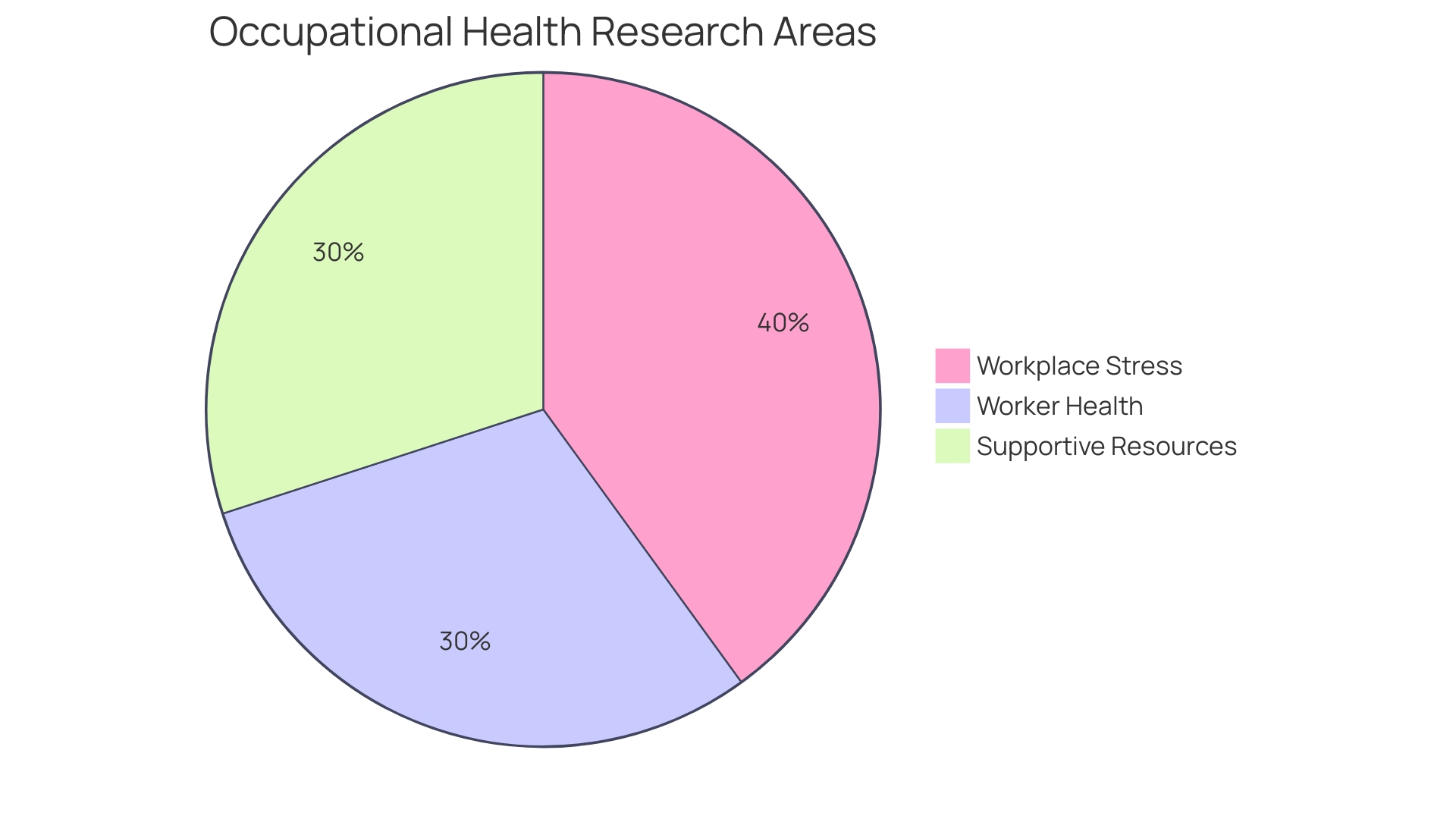
Conclusion
In conclusion, autistic burnout is a state of physical and mental exhaustion that significantly impacts individuals on the autism spectrum. It stems from the constant effort to adapt to a world designed for neurotypical individuals. Supporting those experiencing autistic burnout requires understanding their unique stressors and implementing strategies to reduce demand.
Recognizing and addressing autistic burnout is crucial, as it highlights the broader issue of workplace stress affecting a diverse range of employees. By addressing the needs of neurodivergent individuals, employers can create a more inclusive and supportive environment.
To navigate the road to recovery from autistic burnout, a multidimensional approach is essential. This includes engaging with specialized therapists, emphasizing self-care, creating sensory-friendly spaces, and establishing clear boundaries.
Acceptance and social support play a pivotal role in navigating autistic burnout. Recognizing the importance of neurodiversity and fostering inclusive environments are crucial for supporting individuals with autism.
Harnessing the strengths of autistic individuals is crucial. Embracing their exceptional abilities, such as attention to detail and problem-solving skills, can improve self-confidence and a sense of belonging. Creating supportive environments that nurture the well-being of all employees is essential.
Formal supports and accommodations are vital in navigating life with autism spectrum disorder. Accessible supports can alleviate stressors and aid in managing the environment. Employers should recognize the value of neurodiversity and the contributions of autistic employees.
Understanding personal triggers, adopting preventive strategies, and engaging in self-care practices are crucial in managing and preventing burnout. Building a supportive network and fostering connections with others who can relate to experiences are also essential.
In conclusion, by recognizing and addressing autistic burnout, supporting neurodivergent individuals, and fostering inclusive environments, we can navigate the challenges and ensure the well-being of individuals on the autism spectrum.
Take action now to create an inclusive and supportive environment for neurodivergent individuals!




